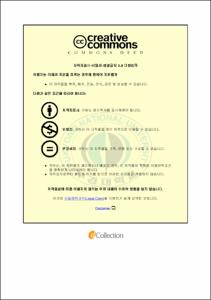영어 무생물 주어 구문의 한국어 번역 양상
- Alternative Title
- Aspects of English-Korean Translation for Inanimate Subject Construction
- Abstract
- The purpose of this thesis is to analyze how the use of inanimate subjects affects translation of English inanimate subject construction into Korean. Existing related research mainly deals with English-Korean translation of inanimate subjects with transitive verbs and doesn't examine the features of inanimate subjects with intransitive verb construction.
This thesis analyzes how animacy and transitivity affect alteration of the subject in translation with examples from the real English-Korean translation of the recent bestselling novel「A Special Relationship」. Examples were transcribed along with their corresponding sentences from the Korean Translation ⌜Wiheomhan Gwangye⌟.
The analysis shows the rate that the subject remains in the subject position is 74% in translating intransitive verb constructions, much higher than 52.1% when translating transitive verb constructions. In the intransitive construction data, 21 examples of subjects to adverb transformation and 11 examples of subject to object transformation were observed.
Subject transformation is examined in two ways. First, what part of speech did the English subject change to in its Korean translation? And second, which part of the English sentence became the new subject in the Korean version?
In the case of transitive verb subject transformations, the English object or a possessive word was likely to become the new Korean subject, but in intransitive verb constructions there is no object so the new subject must come from another part of the sentence. In this case it was observed that the new subject in the Korean version was usually raised from a possessive word, prepositional phrase, or a previous sentence in the English version. Examples from possessive words were the most frequent, followed by examples from a previous sentence. Further, it was determined that the most important factor in choosing the new subject was the degree of animacy.
- Issued Date
- 2015
- Awarded Date
- 2015. 2
- Type
- Dissertation
- Publisher
- 부경대학교
- Alternative Author(s)
- Kim, Hee Jeong
- Affiliation
- 부경대학교
- Department
- 대학원 영어영문학과
- Advisor
- 김은일
- Table Of Contents
- Abstract ⅳ
Ⅰ. 서 론 1
1.1 연구의 필요성과 목적 1
1.2 연구 방법 2
Ⅱ. 이론적 배경 4
2.1 유생성 4
2.2 타동성 6
2.3 자동사의 유형 8
2.4 무생물 주어 구문의 영한 번역에 관한 선행연구 11
Ⅲ. 영어 무생물 주어의 한국어 번역시 유지와 변경 14
3.1 영어 무생물 주어-타동사 구문의 영한 번역 15
3.1.1 주어로 유지 되는 경우 16
3.1.2 주어가 변경되는 유형 18
3.1.2.1 부사나 부사구로의 전환 19
3.1.2.2 목적어로의 전환 23
3.1.2.3 서술어로의 전환 26
3.1.2.4 주어가 생략되어 번역되는 유형 27
3.2 영어 무생물 주어-자동사 구문의 영한 번역 29
3.2.1 주어로 유지되는 경우 30
3.2.2 주어가 변경되는 유형 36
3.2.2.1 부사로의 전환 37
3.2.2.2 목적어로의 전환 40
3.2.2.3 서술어로의 전환 44
3.2.2.4 무생물 주어가 생물주어로 번역되는 경우 47
3.2.2.5 주어가 생략되어 번역되는 유형 48
Ⅳ. 결 론 52
참 고 문 헌 56
표 목 차
무생물 주어 구문의 자동사구문과 타동사 구문의 빈도 비교 14
영어 무생물 주어-타동사구문의 한국어 번역시 주어의 유지와 변경 15
영어 무생물 주어-타동사구문의 한국어 번역시 주어의 변경 18
영어 무생물 주어-자동사구문의 한국어 번역시 주어의 유지와 변경 29
영한 번역시 주어가 유지 되는 경우의 무생물 주어
-영어 무생물 주어-자동사 구문에서 30
영어 무생물 주어-자동사구문의 한국어 번역시 주어의 변경 37
부사로 전환된 경우 새로운 주어 생성 40
목적어로 전환된 경우 새로운 주어 생성 43
서술어로 전환된 경우 새로운 주어 생성 47
- Degree
- Master
- Files in This Item:
-
-
Download
 영어 무생물 주어 구문의 한국어 번역 양상.pdf
기타 데이터 / 893.74 kB / Adobe PDF
영어 무생물 주어 구문의 한국어 번역 양상.pdf
기타 데이터 / 893.74 kB / Adobe PDF
-
Items in Repository are protected by copyright, with all rights reserved, unless otherwise indicated.